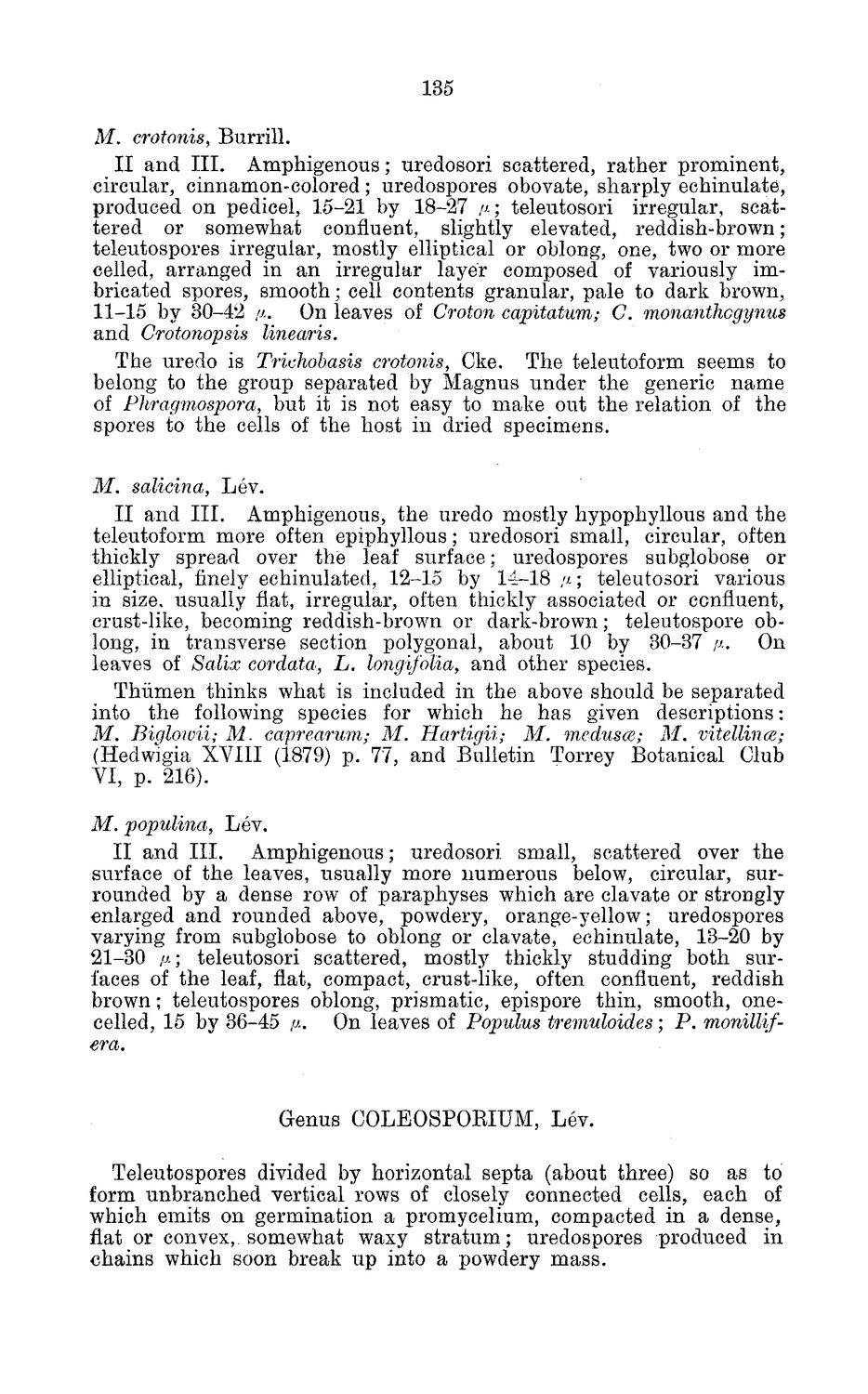| |
| |
Caption: Board of Trustees Minutes - 1884
This is a reduced-resolution page image for fast online browsing.

EXTRACTED TEXT FROM PAGE:
135 M. crotonis, Burrill. II and III. Amphigenous; uredosori scattered, rather prominent, circular, cinnamon-colored; uredospores obovate, sharply echinulate, produced on pedicel, 15-21 by 18-27 /*; teleutosori irregular, scattered or somewhat confluent, slightly elevated, reddish-brown; teleutospores irregular, mostly elliptical or oblong, one, two or more celled, arranged in an irregular layer composed of variously imbricated spores, smooth; cell contents granular, pale to dark brown, 11-15 by 30-42 //. On leaves of Croton capitatum; C. monanthogynus and Crotonopsis linearis. The uredo is Trichobasis crotonis, Cke. The teleutoform seems to belong to the group separated by Magnus under the generic name of Phragmospora, but it is not easy to make out the relation of the spores to the cells of the host in dried specimens. M. salicina, Lev. II and III. Amphigenous, the uredo mostly hypophyllous and the teleutoform more often epiphyllous; uredosori small, circular, often thickly spread over the leaf surface; uredospores subgiobose or elliptical, finely echinulated, 12-15 by 14-18 n; teleutosori various in size, usually flat, irregular, often thickly associated or confluent, crust-like, becoming reddish-brown or dark-brown; teleutospore oblong, in transverse section polygonal, about 10 by 30-37 i±. On leaves of Salix cordata, L. longifolia, and other species. Thumen thinks what is included in the above should be separated into the following species for which he has given descriptions: M. Bigloivii; M. caprearum; M. Hartigii; M. mcdusce; M. vitellines,(Hedwigia XVIII (1879) p. 77, and Bulletin Torrey Botanical Club VI, p. 216). M, populina, Lev. II and III. Amphigenous; uredosori small, scattered over the surface of the leaves, usually more numerous below, circular, surrounded by a dense row of paraphyses which are clavate or strongly enlarged and rounded above, powdery, orange-yellow; uredospores varying from subgiobose to oblong or clavate, echinulate, 13-20 by 21-30 /x; teleutosori scattered, mostly thickly studding both surfaces of the leaf, flat, compact, crust-like, often confluent, reddish brown; teleutospores oblong, prismatic, epispore thin, smooth, onecelled, 15 by 36-45 n. On leaves of Populus tremuloides; P . monillifera. Genus COLEOSPOBIUM, Lev. Teleutospores divided by horizontal septa (about three) so as to form unbranched vertical rows of closely connected cells, each of which emits on germination a promycelium, compacted in a dense, flat or convex, somewhat waxy stratum; uredospores produced in chains which soon break up into a powdery mass.
| |